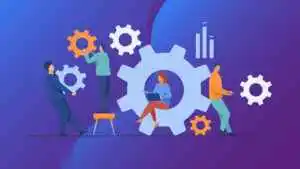What is Chassis: The Backbone of Transportation
What is it?
A chassis, in the context of transportation and logistics, refers to the framework or structural undercarriage of a vehicle, typically excluding the body and cabin. It serves as the foundation to which various components, such as the engine, transmission, wheels, and cargo containers, are attached.
How it helps?
Structural Integrity: The chassis provides structural integrity and support to the vehicle, ensuring that it can withstand the stresses and loads encountered during transportation activities.
Component Attachment: Various critical components, including the engine, transmission, and suspension systems, are affixed to it. This modular design allows for flexibility in vehicle configurations and specialized transport applications.
Cargo Transport: In the case of cargo transport, specialized chassis are designed to accommodate containers or trailers securely. This facilitates the efficient movement of goods by road or rail.
Why is it needed?
Vehicle Stability: It plays a pivotal role in maintaining the stability of a vehicle. It distributes the weight of the vehicle and its cargo evenly, preventing issues like imbalance or tipping during transit.
Customization Possibilities: Different types of vehicles, from trucks to buses, can share a common chassid design. This allows manufacturers to customize vehicles for various purposes without reinventing the entire structure.
Versatility in Transport: The design is adaptable to different transportation needs. It can support the transport of various types of cargo, including containers, liquids, or bulk materials, making it a versatile component in the logistics chain.
Significance:
Foundation for Mobility: The chassis serves as the foundational structure that enables the mobility of a vehicle. Its design and construction are critical for ensuring the safety, durability, and overall performance of the transportation unit.
Safety Assurance: A robust design is essential for ensuring the safety of both the vehicle and its occupants. It contributes to structural integrity, minimizing the risk of accidents or failures during transit.
Economic Impact: Chassis standardization across vehicle types allows for economies of scale in manufacturing, making vehicles more cost-effective. This, in turn, influences the affordability and accessibility of transportation services.
Key Aspects of Chassis:
Frame Construction: Its frames are typically constructed from materials like steel or aluminum, chosen for their strength and durability. The frame design varies based on the intended use of the vehicle.
Suspension System: It integrates the suspension system, which absorbs shocks and vibrations, contributing to a smoother ride and protecting both the vehicle and its cargo.
Mounting Points: Various mounting points on the chassis accommodate the attachment of components, such as the engine, transmission, axles, and cargo containers. This modularity allows for flexibility in vehicle design.
Load Distribution: Its design includes considerations for load distribution, ensuring that the weight of the vehicle and its cargo is distributed evenly to maintain stability and prevent overloading.
Specialized Chassis: Different industries may require specialized chassis designs. For example, a chassis designed for container transport will have features specific to securely hold and transport containers.
In summary, the chassis is the unsung hero of transportation, providing the structural foundation for vehicles and facilitating the efficient movement of goods. Its significance lies in its role as the backbone of mobility, ensuring safety, enabling customization, and contributing to the economic efficiency of the transportation industry. The key aspects of the chassis include frame construction, the integration of the suspension system, mounting points for components, load distribution considerations, and the adaptability to specialized transport needs. As technology advances, chassis design continues to evolve, driving improvements in vehicle performance, safety, and overall transportation efficiency.






